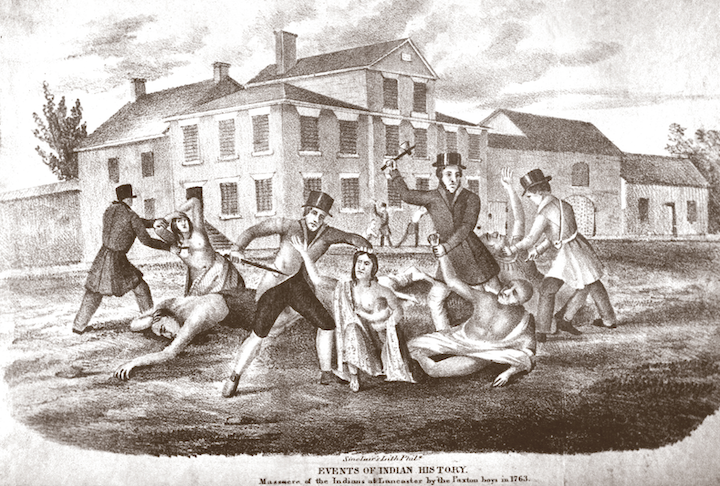For my digital project review, I decided to look at Digital Paxton: Digital Collection, Critical Edition, and Teaching Platform by Will Fenton. I found this digital history project through the Historical Society of Pennsylvania. Fenton is currently the Director of Scholarly Innovation at the Library Company of Philadelphia and also the Creative Director of Redrawing History: Indigenous Perspectives on Colonial America. The project was created as a way to digitize primary source collections while providing contextual information from essays written by historians on the Paxton Massacre of 1763. This project fits best into the categories of archive, digital narrative, and teaching resource according to the guidelines set forth by the Journal of American History. The site provides a body of primary sources accompanied by narratives, serving as a teaching and learning resource.
Digital Paxton begins with a brief introductory page followed by an instruction manual that teaches visitors how to use the site. Since, Digital Paxton currently contains over 2,500 images, the page on how to use the site is greatly appreciated and gives an overview of the collection. This makes using the site much easier and less overwhelming. The introductory pages are then followed by a page containing contextual historical information. For example, this page explains important events such as the French and Indian War, Pontiac’s War, the Paxtang Settlement, the 1763 Massacre of Conestoga Indians, the Penn treaties, etc. Along with providing links to primary source documents and images, this page highlights the major works of scholarship published on the topic. Historical interpretation is derived from works by Kevin Kenny, Michael Goode, Jay Donis, Jack Brubaker, Darvin Martin, and more. Including information from secondary sources is helpful because it puts the Paxton Massacre into its historiographical context.
There are 6 pages of historical overview, which adds up to a lot of reading. Though some readers may get overwhelmed or bored with the abundance of information, the inclusion of primary source sketches and documents makes it easier to retain focus.
- Peaceable Kingdom Lost: The Paxton Riots by Kevin Kenny
- Pontiac’s War and the Paxton Boys by Michael Goode
- One Year Later: The Black Boys of 1765 by Jay Donis
- The Aftermath of the Conestoga Massacre by Jack Brubaker
- A History of Conestoga Indiantown by Darvin L. Martin
- A New Looking-Glass for the 1764 Paxton Pamphlet War by Will Fenton
The next section of the site includes the digital collections, which are organized by categories including art, books, broadsides, manuscripts, newsprint, pamphlets, political cartoons, and transcribed records. There is also a page dedicated to educational outreach and is divided between high school education and higher education, both of which include selected secondary and primary source readings as well as sample assignments. There is also a page dedicated to public outreach, where links are provided connected to the project’s Facebook and Twitter pages. The public outreach page also links to the Historical Society of Pennsylvania, The Library Company of Philadelphia, and the Fordham University Digital Collaborative.
This digital project is a bountiful resource for anyone with a desire to learn more about colonial Pennsylvania, including high school students and teachers, professors, undergraduate and graduate students, and even professional historians. Because this site is rich in both primary and secondary sources, it can be used dually as a resource for teaching and researching. This digital project would be a great resource to introduce students to working with primary source documents. Since the primary source documents featured on the site come from various archives, it is also a convenient tool for aiding scholars who wish to locate and conduct further research on the topic.
Overall Digital Paxton is easy to navigate and uses a publishing platform called Scalar, which supports content paths. This makes navigating through the site feel like walking through the narrative of the Paxtang Massacre. The site functions well and is fairly simple to use and follow. The site is designed to be clear and functional, though it is not as visually compelling and interactive as it could be. The most useful feature of the project is that the sources are full text searchable. While the Digital Paxton project should not replace traditional archival research, it is can be used as a tool for discovering primary sources that scholars may not have been aware of and should encourage further archival research.
